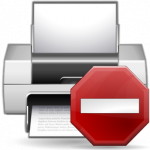 Printing with 64-bit Windows can be a lot of fun if you don’t have a 64-bit driver.
Printing with 64-bit Windows can be a lot of fun if you don’t have a 64-bit driver.
As I mentioned in Windows x64: How to Print to Any Printer Even Without a 64-bit Driver, there are ways to make your printer talk, even if they are a bit involved.
There is one other trick in particular that you might want to try first, though: use a similar 64-bit driver from the same manufacturer and fool Windows into thinking that everything is working fine!
Before you read any further, do visit the manufacturer’s web site again and check for the availability of a 64-bit driver for your specific printer model. It turns out that Canon, for example, released a boatload of 64-bit drivers a few weeks ago. So, if you have, say, a Canon LBP5100 color laser printer, there is now a 64-bit driver available! WOOHOO! Took long enough, though…
For the rest of you, read on!
The 64-bit version of Windows 7 is very popular, and manufacturers know it. There are also a lot of people who are complaining that their make and model doesn’t have a 64-bit driver. Don’t underestimate the power of complaining! If enough people complain, they will move their butts and get you your driver. The squeaky wheel gets the grease and all that…
For those of you who are still unlucky enough to not have:
- An official 64-bit driver
- A spare computer to use as a print server as mentioned in the post linked above
Fear not! There’s still another trick to try.
This one is not exactly “easy”. By that I mean that you will have to actually find a printer by the same manufacturer that is similar to the one you have. Then you will have to download the driver files, expand them, and edit an .INF file. If that sounds daunting, don’t worry. It’s easier than it sounds.
Using Canon as an example again, let’s say you have a multifunction Canon MF3110. This is one of those “scanner / copier / dishwasher / monochrome laser printers”. One of them “all-in-one” jobbies. Of course, Canon has previously let it be known that certain older all-in-ones will never have 64-bit drivers. Well, that’s just ridiculous.
Fortunately, there are other similar printer models that DO have 64-bit drivers, which makes the lack of a driver for the MF3110, for example, all the more ridiculous!
In any case, on Fixya.com, we find a most interesting thread. On that page, we read the following instructions:
i found a solution for printing with Canon MF 3110
1- Download Driver For MF5730/5750/5770 For Vista 64-Bit
File Name : L7602ENx.exehttp://software.canon-europe.com/products/0010260.asp
Follow These Steps
1- Add Printer
2- add a local printer
3- Use an existing Port : Choose : USB ( Virtual Printer for USB )
4- Have Disk
5- Locate the File Name : MF5700AK.inf
6- Printer Name : Change From Canon MF5700 Series To Canon MF3110 Series
7- Print Test Pageit Work for me on Vista Home Premium SP1 64-Bit
P.s
still Cant Manage to use the Toolbox 4.9.1.1.mf04 for Scanning ( Any Ideas ? )
Whattaya know? It works! I done tried it myself! I should note that I used this driver:
http://software.canon-europe.com/software/0037099.asp
I changed 2 sections in the MK5700AK.inf file as follows:
;64-bit x64 [Canon.NTamd64] "Canon MF3110" = MF5700,USBPRINT\CanonMF5730c609,CanonMF5730c609,"MF5730" "Canon MF3110" = MF5700,USBPRINT\CanonMF5750660a,CanonMF5750660a,"MF5750" "Canon MF3110" = MF5700,USBPRINT\CanonMF5770060b,CanonMF5770060b,"MF5770" ;32-bit x86 [Canon] "Canon MF3110" = MF5700,USBPRINT\CanonMF5730c609,CanonMF5730c609,"MF5730" "Canon MF3110" = MF5700,USBPRINT\CanonMF5750660a,CanonMF5750660a,"MF5750" "Canon MF3110" = MF5700,USBPRINT\CanonMF5770060b,CanonMF5770060b,"MF5770"
Of course, as the poster notes, the Canon Toolbox software for scanning will not work. That’s a big problem if you actually wanted to use all the multi-functions of your multifunction device (crazy, I know!). But at least you will be able to print again, and all the printing options will usually work fine.
The same principle can work for other makes and models of printers. Find a similar printer (probably one that’s a bit fancier), download the driver, change the name of the printer in the INF file to match your model, and try to install the driver. If it doesn’t work, try a different driver. It’s important to get a driver in the same type and series of printers. For example, you probably will not have any success if you try to use a color laser printer driver for your monochrome multifunction.
Sure, it’s not exactly as simple and automatic and as installing an official driver for your model, but if it works, at least your paperweight will be able to print again!
If anyone finds any other examples of “substitute drivers” that work, please let us know in the comments. Thanks!




THANK you very much!!!
I’ve been looking for the way to make my MF3110 printer talk so much time. There are many mentions of compatibility this printer with MF5730/5750/5770 driver, but no explanations of connection to NETWORK printer from Windows 7 x64 system. Edition of the MK5700AK.inf file did the trick 🙂
Thank you very very very much
you are great
My son has a new windows 8 (64bit) machine that needs to be able to print wirelessly to our Canon MF3110 like the rest of us. I have followed these steps to no avail. Anyone figured out how to get this working on Windows 8?
thank you so much
help me a lot